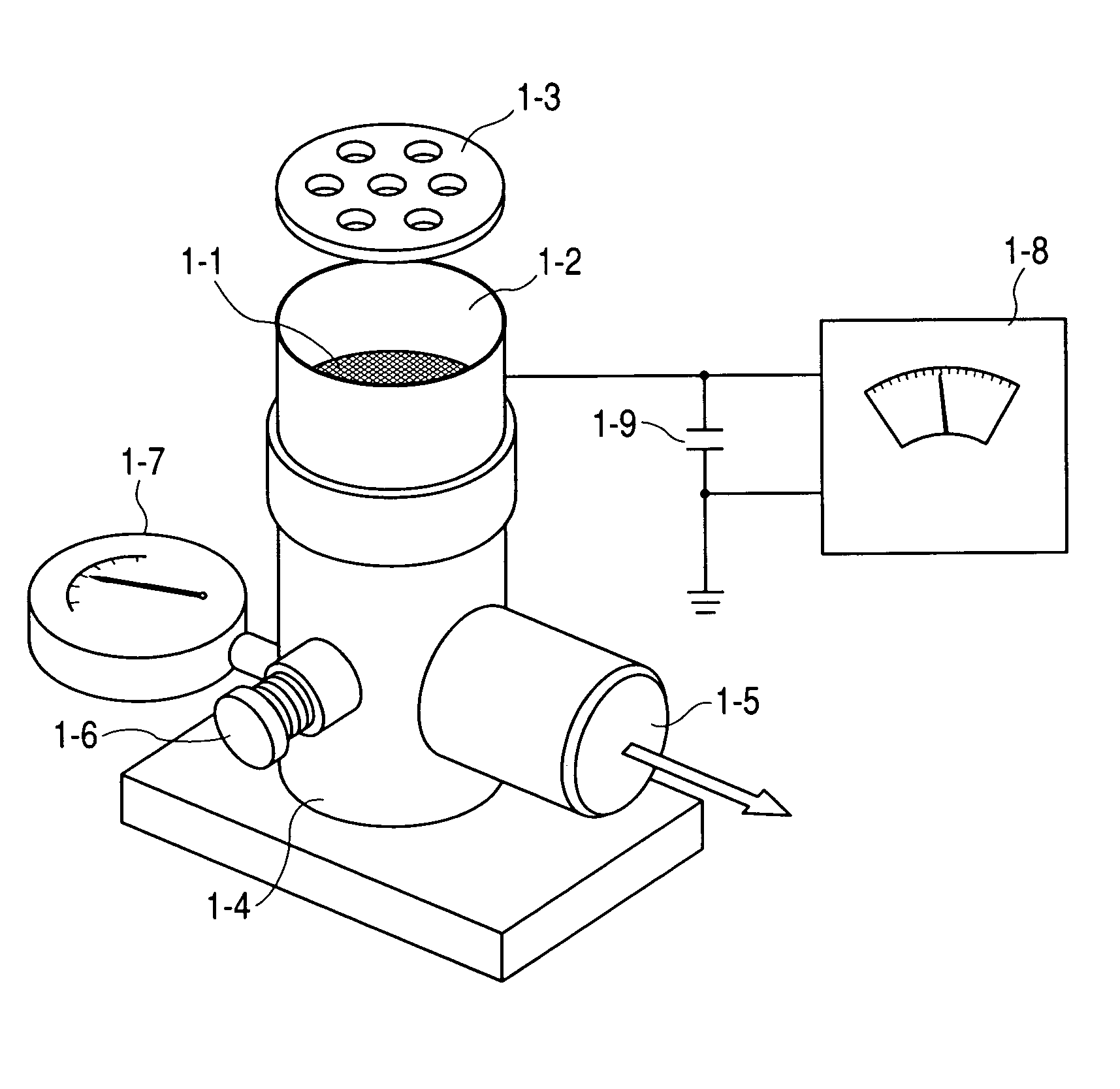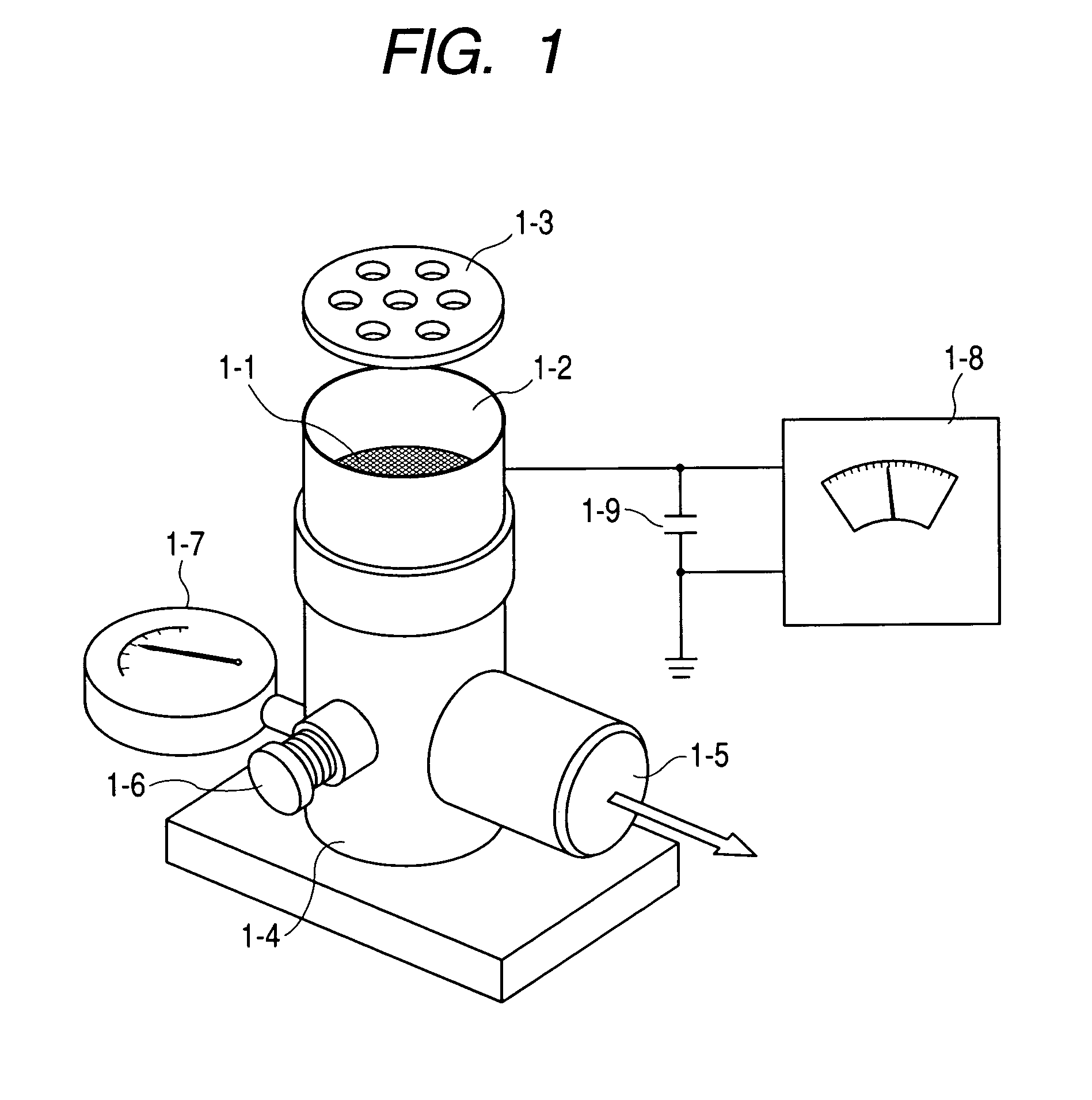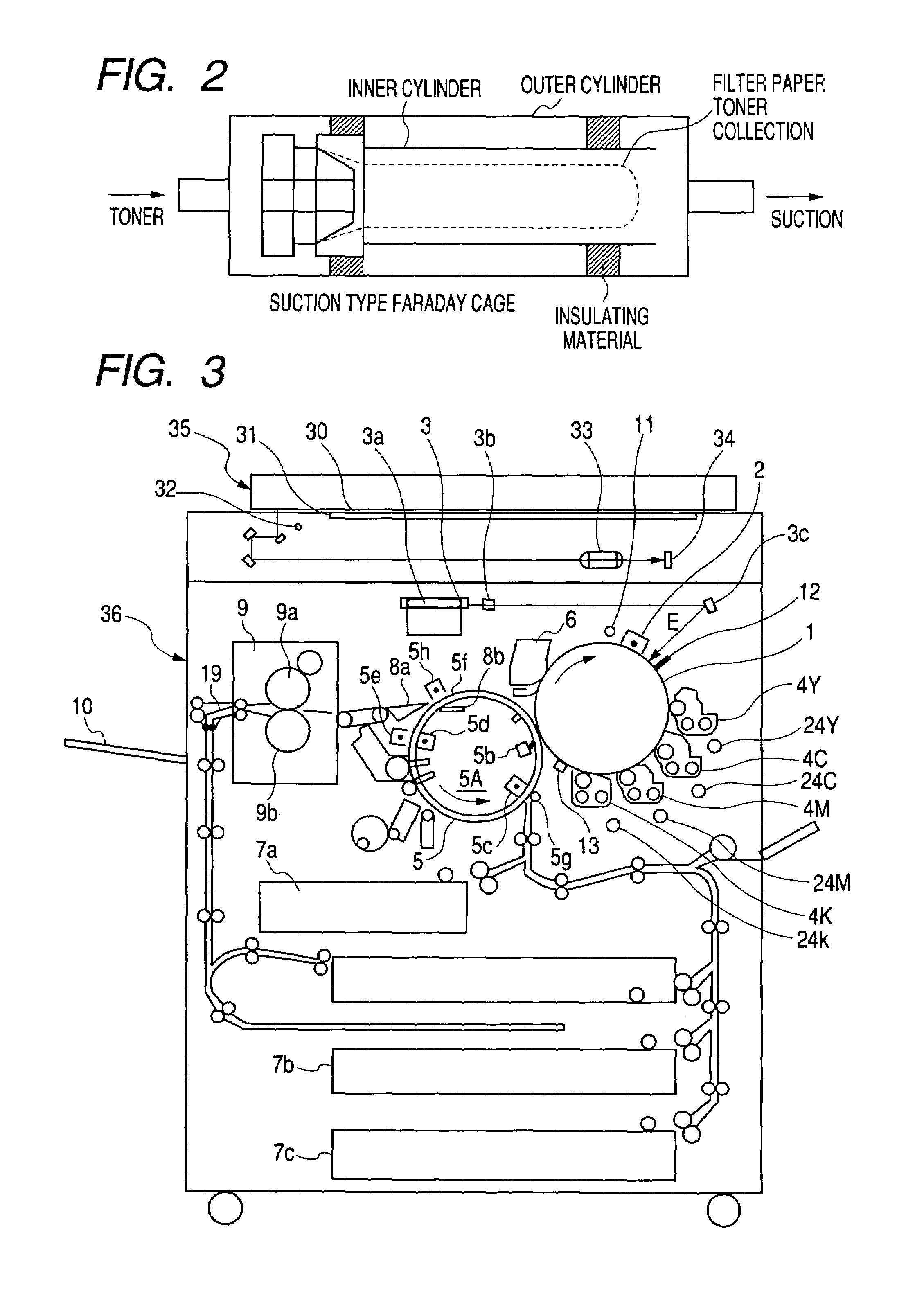Toner, and image forming method
a technology applied in the field of toner and image forming methods, can solve the problems of low chroma or brightness of projected images, insufficient technical support, color reproducibility and development, etc., and achieve superior color reproducibility, high-temperature anti-offset properties, and improved color dispersibility of toner particles.
- Summary
- Abstract
- Description
- Claims
- Application Information
AI Technical Summary
Benefits of technology
Problems solved by technology
Method used
Image
Examples
production example 2
[0220]As components constituting a vinyl polymer unit (hereinafter referred to also as “vinyl polymer unit components”), 1.1 moles of styrene, 0.14 moles of 1,2-ethylhexyl acrylate, 0.1 moles of acrylic acid and 0.05 moles of dicumyl peroxide were put into a dropping funnel. In addition, as polyester unit components, 2.0 moles of polyoxypropylene(2.2)-2,2-bis(4-hydroxyphenyl)propane, 0.8 moles of polyoxyethylene(2.2)-2,2-bis(4-hydroxyphenyl)propane, 0.8 moles of terephthalic acid, 0.6 moles of trimellitic anhydride, 1.5 moles of fumaric acid and 2.7 g of a titanium chelate (Exemplary Compound 3) were put into a 4-liter four-necked flask made of glass, and a thermometer, a stirring rod, a condenser and a nitrogen feed tube were attached thereto. This was placed in a mantle heater.
[0221]Next, the inside of the flask was displaced with nitrogen gas, followed by gradual heating with stirring. With stirring at a temperature of 145° C., the monomers, cross-linking agent and polymerization...
production example 3
[0223]As polyester unit components, 5.2 moles of polyoxypropylene(2.2)-2,2-bis(4-hydroxyphenyl)propane, 1.8 moles of terephthalic acid, 2.5 moles of dodecenylsuccinic acid, 0.5 moles of trimellitic anhydride, 0.7 g of a titanium chelate (Exemplary Compound 1) and 2.0 g of a titanium chelate (Exemplary Compound 3) were put into a 4-liter four-necked flask made of glass, and a thermometer, a stirring rod, a condenser and a nitrogen feed tube were attached thereto. This was placed in a mantle heater. In an atmosphere of nitrogen, reaction was carried out at 245° C. for 5 hours to obtain Resin 3 Having Polyester Unit. The polyester unit components in the resin having a polyester unit are in a proportion of 100% by weight with respect to the resin having a polyester unit. Physical properties of Resin 3 Having Polyester Unit are shown in Table 1.
[0224]Resin Having Polyester Unit
production example 4
[0225]Resin 4 Having Polyester Unit was obtained in the same manner as in Resin Having Polyester Unit Production Example 3 except that in place of the titanium chelate Exemplary Compounds 1 and 3 a titanium chelate Exemplary Compound 2 was used. The polyester unit components in the resin having a polyester unit are in a proportion of 100% by weight with respect to the resin having a polyester unit. Physical properties of Resin 4 Having Polyester Unit are shown in Table 1.
[0226]Resin Having Polyester Unit
PUM
| Property | Measurement | Unit |
|---|---|---|
| light transmittance | aaaaa | aaaaa |
| temperature | aaaaa | aaaaa |
| temperature | aaaaa | aaaaa |
Abstract
Description
Claims
Application Information
 Login to View More
Login to View More - R&D
- Intellectual Property
- Life Sciences
- Materials
- Tech Scout
- Unparalleled Data Quality
- Higher Quality Content
- 60% Fewer Hallucinations
Browse by: Latest US Patents, China's latest patents, Technical Efficacy Thesaurus, Application Domain, Technology Topic, Popular Technical Reports.
© 2025 PatSnap. All rights reserved.Legal|Privacy policy|Modern Slavery Act Transparency Statement|Sitemap|About US| Contact US: help@patsnap.com



